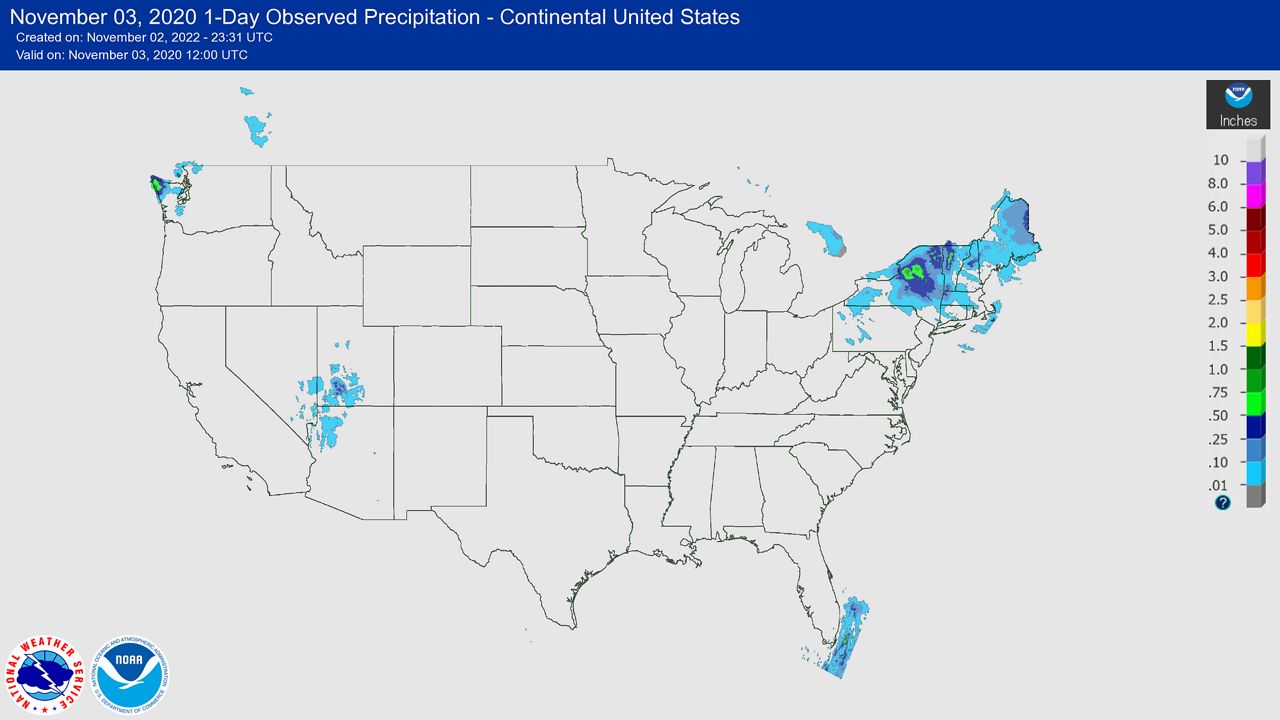There’s a reason Election Day is on the first Tuesday of November. And it has (just about) everything to do with the weather.
Election Day falls on the first Tuesday of November because it comes after the fall harvest and before winter’s harshest conditions typically move in.
And weather traditionally plays at least a marginal role in determining an election’s winner and loser.
Dating back to America’s first elections in the 1700s, weather has played a big role in election turnout. Day-long journeys to polling places are the reason that Election Day falls on a Tuesday, and you can probably imagine the challenges that befuddled voters trudging through horseback on mud-laden roads.
But even with modern conveniences of electricity and cars, lousy weather still plays an outsized part in determining the winners of an election.
And in the modern political era, lousier weather and lower voter turnout typically translates to sunnier results for Republicans.
Several studies in the modern political era point to the GOP’s advantage when bad weather goes up and turnout goes down.
Those studies also show that Republicans are typically higher turnout voters, meaning suppressed turnout because of bad weather tends to specifically reduce the number of Democratic or Democratic-leaning voter groups.
Why is that the case? So-called “peripheral voters,” who are less inclined to vote for a variety of reasons, tend to vote Democrat. If rain is a significant inconvenience, such as having to walk in it to a polling place because they don’t have transportation, they’ll skip voting.
The 2007 study "The Republicans Should Pray for Rain: Weather, Turnout, and Voting in U.S. Presidential Elections" indicated that rain and snow slightly reduced turnout—and benefited Republicans.
“We find that, when compared to normal conditions, rain significantly reduces voter participation by a rate of just less than 1% per inch, while an inch of snowfall decreases turnout by almost 0.5%,” said the 2007 study. “Poor weather is also shown to benefit the Republican Party’s vote share.”
That study also argued that different weather could have altered the outcomes of the 1960 and 2000 presidential elections.
Rain and snow get most of the attention, but another study that looked at the 2004 election explored other factors. It found that sunshine and mild temperatures lowered turnout overall. In fact, for every 10-degree rise in temperature, voting probability dropped by 0.6%.
The study’s author speculates some people chose to enjoy the weather while they could, rather than use that time to go vote.
That’s not always the case, though. Election Day 2020 was a beautiful day weather-wise with very little precipitation, with the exception of the Northeast and parts of the Pacific Northwest and Mountain West.

According the to U.S. Census Bureau, the 2020 presidential election had the highest voter turnout of the 21st Century. Although, most of the surge was due to an increase in mail-in voting.
The U.S. Census Bureau states that "in 2020, 43% of voters cast ballots by mail and another 26% voted in person before Election Day. In 2016, 21% mailed in their ballots and 19% voted in person prior to Election Day."
This year’s Election Day forecast could be more eventful than that of 2020. A series of systems look likely to bring rain, wind, and snow to some throughout the day. Let’s have a closer look.
Overall, it is going to be a mild Election Day for much of the eastern half of the United States. A sweeping front front will bisect the country bringing highs well above average into the 70s and 80s in the Northeast, Tennessee Valley, and Southeast.
In the west, temperatures behind the front will run cooler with highs in the 40s and 50s in the Mountain West. Warmer weather is expected in the Desert Southwest.
)
As for where the precipitation will end up, rain is likely along the front from the Great Lakes through the Deep South. Storms will be possible along this line and could create headaches for voters in places like New Orleans, Memphis, and Chicago during the day.
There is a chance of severe storms with this front in the Deep South and parts of the Midwest. Wind would be the main risk.
Elsewhere, some scattered showers will be possible in Florida and the Carolinas into the afternoon and evening.
Farther west, cooler air will allow for mountain snow in the Rockies along with some rain during the day in the Pacific Northwest. Drier weather is expected in the Desert Southwest and along the coast.
Be sure to be weather aware and have a voting plan in place.
Check your local forecast here.
Our team of meteorologists dives deep into the science of weather and breaks down timely weather data and information. To view more weather and climate stories, check out our weather blogs section.



